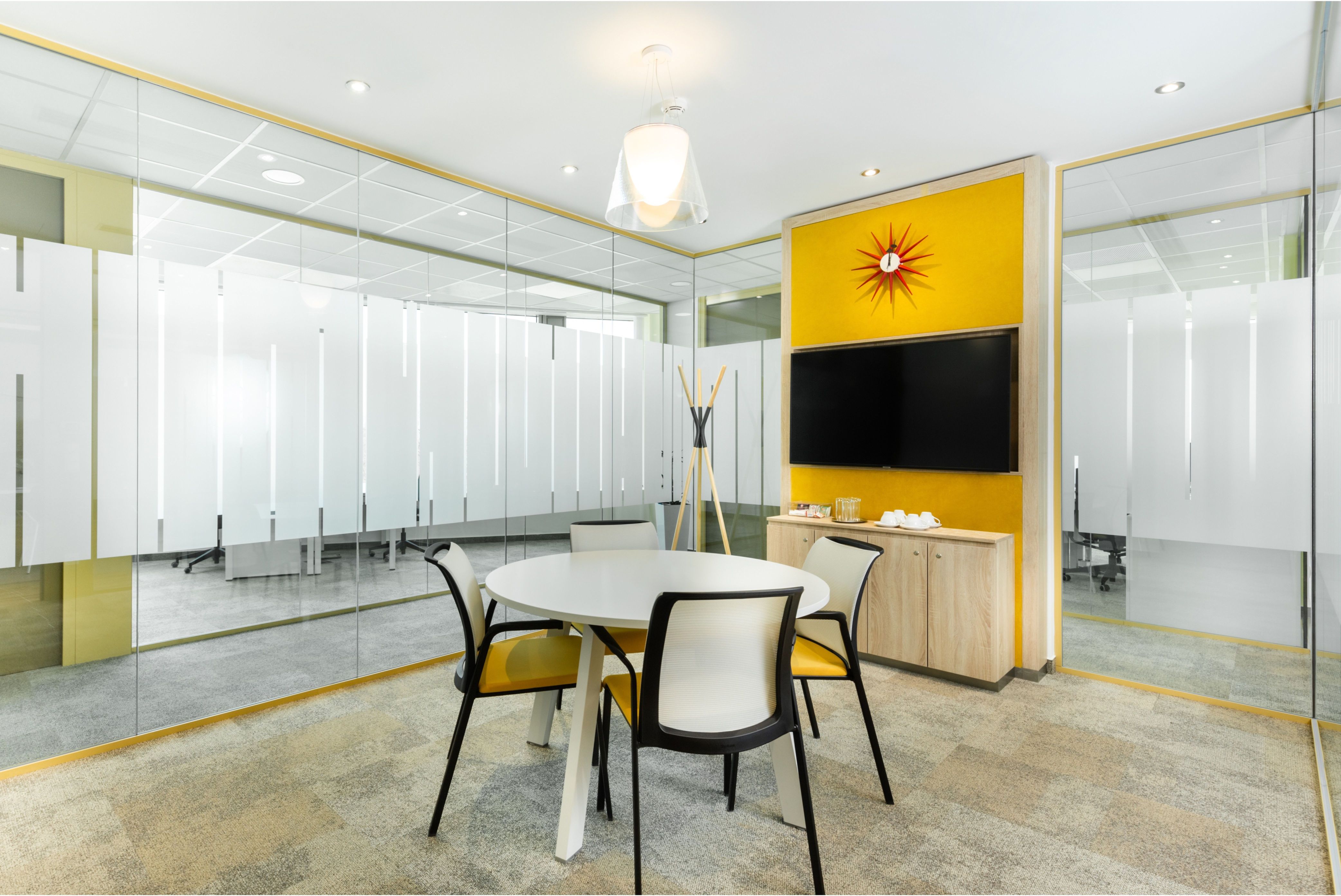Higher-specified Office Projects the Order of the Day

BP’s new office in Budapest. Europa Design worked on the project.
The Budapest office pipeline is low; developers are exercising caution, and new projects are being put on hold given the uncertain economic, geopolitical, and cost environment. However, ongoing schemes are progressing, despite these issues and concerns over letting, office working practices and even how much time is spent in the office.
In response to market pressures and strengthening environmental regulations, developers are delivering more sustainable office developments. A growing trend is for offices to be part of mixed-use projects. That said, how changing work practices will impact the office market remains to be seen.
“Since there is a clear demand for further enhancement of office spaces in Budapest, we are not experiencing as drastic a reduction in space as in some other CEE markets and Western European markets,” comments Kata Mazsaroff, managing director of Colliers Hungary.
“This post-pandemic work culture balances remote and in-office work while addressing workspace quality and flexibility. Accessibility, workspace experience and ESG requirements are at the forefront of occupier demand,” she says.
Consultancy iO Partners has traced a 287,000 sqm pipeline of office space for 2023-2026: 96,000 sqm of this is already occupied, with 192,000 sqm still available. Planned developments with a minimum construction time of 24 months stand at 562,000 sqm. The firm says the hybrid model, splitting work between home and office, has become a permanent element of the future of work; it expects 14-15% vacancy by 2025.
There is now around 4.3 million sqm of quality office space in the Budapest market, according to the Budapest Research Forum, which consists of CBRE, Colliers, Cushman & Wakefield, Eston International, iO Partners and Robertson Hungary. About 3.5 million sqm of this is speculative “A” and “B” class stock.
Cushman & Wakefield have traced nine projects of more than 5,000 sqm due to be delivered this year, with the largest at 34,000 sqm. It says the current vacancy rate stands at 13.5%.
Adapt to Succeed
“The success of office spaces in remaining a prime development option will depend on the ability of developers and investors to adapt to changing circumstances, understand tenant requirements, and offer innovative solutions that meet the evolving demands of the modern workplace,” concludes Csaba Zeley, managing director of ConvergenCE.
Despite the subdued pace of the market, core locations with solid ESG features embedded and a high occupancy level continue to be a desirable investment choice, according to Aurelia Luca, executive vice president of operations for Hungary and Romania at Skanska.
“Its appeal is clear, presenting significant opportunities for investors looking for stable, long-term gains. Our project pipeline is strong and forward-looking with the next phases of H2Offices and a new project called Hold, a boutique office development in downtown Budapest,” she explains.
“These plans are supported by significant interest from prospective tenants. We are also open to identifying landbank opportunities, which play a crucial role in strengthening and shaping our portfolio’s future direction,” Luca says. As ever with real estate, little trumps location.
“Prime locations are crucial for companies to attract and retain talent, acknowledging the importance of convenience and accessibility. This is one of the reasons our projects and landbank are located in easily accessible places, where one can travel by many means of transportation, including sustainable ones,” she adds.
Tamás Pál, business development director at iO Partners, believes that future office developments must be part of an existing business hub and not separate standalone buildings. Instead, offices will be developed alongside additional functions, such as residential or hotel, adding extra value. Jana Vlková, director of workplace advisory and office agency at Colliers in the Czech Republic, agrees with that assessment.
Connection is King
“We will see large office hubs being developed in the future as part of the location and complemented with residential and retail/service amenities. No self-standing office properties without full connection with the location will be developed. The 20-minute city with good accessibility to amenities will also be preferred in CEE,” she believes. Sustainability consultant Zsombor Barta is another to back this trend.
“We see more and more examples of newly developed office buildings where certain floors are developed for hotels or residential flats. I think this new mixed-type development provides more flexibility for developers and makes the buildings more future-proof,” he argues.
Another attractive option, not least from a sustainability and circular economy point of view, is the renovation and redevelopment of existing buildings. The aim here is “to bring these buildings up to the level of the current requirements both from a technical perspective and from a tenant experience point of view,” comments iO’s Pál.
Some factors, like the scheme’s location and internal construction, can limit what is technically possible, but there is still much to commend this approach.
“ESG-influenced work patterns will navigate developers to refurbish existing buildings rather than develop new ones. This is how the carbon footprint can be limited,” Pál insists. “We will need to find out how to work more efficiently and smartly using less resources and more renewable energy. So, ‘less is more’ should be applied more often when developing a new building or refurbishing and redeveloping an old one. This will also push the recreation of buildings with new functions,” he adds.
While fashions may change over time, the right sort of office development will remain an attractive asset class, according to Máté Galambos, the leasing director at Atenor Hungary.
“As the global landscape of the commercial world keeps changing, investor appetites change with it, which is why industrial and logistics, retail and hospitality investments are becoming more popular in our region. Still, offices are reliably and continuously sought after; I am not worried about their future,” he concludes.
This article was first published in the Budapest Business Journal print issue of January 26, 2024.
SUPPORT THE BUDAPEST BUSINESS JOURNAL
Producing journalism that is worthy of the name is a costly business. For 27 years, the publishers, editors and reporters of the Budapest Business Journal have striven to bring you business news that works, information that you can trust, that is factual, accurate and presented without fear or favor.
Newspaper organizations across the globe have struggled to find a business model that allows them to continue to excel, without compromising their ability to perform. Most recently, some have experimented with the idea of involving their most important stakeholders, their readers.
We would like to offer that same opportunity to our readers. We would like to invite you to help us deliver the quality business journalism you require. Hit our Support the BBJ button and you can choose the how much and how often you send us your contributions.










